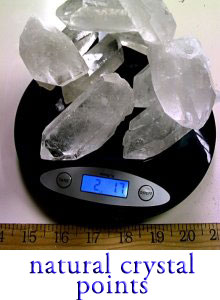
| |
Sunstone gemstone  | |  Emerald stone Emerald stone  | |  Rutile quartz Rutile quartz  | |  Topaz crystal Topaz crystal  | |  Hematite stones Hematite stones  | |  Sapphire stones Sapphire stones  | |  Fluorite crystal Fluorite crystal  | |  Diamonds meaning Diamonds meaning  | |  Vogel crystal Vogel crystal  | |  Blue lace agate Blue lace agate  | |  Jade gem stone Jade gem stone  | |  Orthoclase Orthoclase  | |  Lepidolite properties Lepidolite properties  | |  Sattuckite properties Sattuckite properties  | |  Citrine Citrine  | |  Aquamarine Aquamarine  | |  Rose quartz Rose quartz  | |  Amethyst Amethyst  | |  Fire opal Fire opal  | |  Obsidian Obsidian
 | |  Prehnite Prehnite  | |  Opal Opal  | |  Kunzite Kunzite
 | |  Thulite Thulite  | |  Tourmaline Tourmaline  | |  Amazonite Amazonite  | |  Petalite Petalite  | |  Tektite | Tektite |  Pietersite | Pietersite |  Ruby | Ruby |  | |  Chrysoprase | Chrysoprase | 
|
Crystal Structure of Stones and Minerals
Crystal order is one of the most important elements and the basis of life. Crystal structure is a measure of order where we have atoms aligned in a regular fashion with other atoms or similar kind.
Crystals have very high symmetry and their structures are very much organized. Their lattices can be amazingly ordered. It is due to the this organization that we have a sort of energy field throughout each crystal and mineral. Our physical bodies, with its bones and muscles, also have a certain degree of order which we could denote as crystalline.
We receive a lot of information about a certain crystal from its chemical formula. We immediately know about its composition. The chemical formula shows us the types and number of atoms that enter the composition of the crystal. Moreover, if we know the chemical formula, we can find out how many atoms of one type are in the crystal with respect to the number of atoms of other types.
From the crystal structure itself we can also receive additional information. For example, if we know the space group and non-equivalent atoms we can get the unique distribution of atoms in space. Usually, there is a specific motif, like a group of a couple of atoms repeating in a periodic way in space.
Each crystal has its own unit cell. A unit cell is a portion of the mineral that has 3 lengths, a, b, and c - which are usually called lattice parameters. There are also 3 angles, alpha, beta, and gamma. If we repeat the unit cell in x, y, and z direction, we should ideally get a visible macroscopic crystal.

The image depicts the tetragonal unit cell of Rutile with the characteristic octahedral arrangement of oxygen atoms around the central titanium.
An important property of any crystal is symmetry. Symmetry means that there are some rotation axis and planes of reflection, which, after some operations of translation, rotation, or reflection leave the distribution of atoms identical to the starting position. If we consider just symmetry, crystals are more or less symmetrical. The crystals belonging to the cubic structure have the highest possible symmetry.
Another important point to keep in mind is that natural crystals are far from being ideal. They have defects and irregularities which bring disorder in the otherwise ideal lattice. These defects may actually serve a purpose. They may determine certain electrical, mechanical, and optical properties. For example, in certain crystals, defects can change their color.
There are only 7 crystal systems for classification of all known crystals, as follows:
CUBIC SYSTEM
cubic system
a=b=c
alpha=beta=gamma=90 degrees
Representatives: most of the metals, NaCl, Diamond
TETRAGONAL SYSTEM
tetragonal system
a=b, c, alpha=beta=gamma=90 degrees
Representatives: Rutile, Chalcopyrite
RHOMBOHEDRAL (TRIGONAL) SYSTEM
rhombohedral system
a=b=c, alpha, beta, gamma different from 90 degrees
Representatives: Calcite, Corundum, Hematite, Tourmaline, Dolomite, Quartz
HEXAGONAL SYSTEM
hexagonal system
a, c, alpha=beta=90 degrees, gamma=120 degrees
Representatives: Beryl, Apatite
ORTHORHOMBIC SYSTEM
orthorhombic system
a, b, c, alpha=beta=gamma=90 degrees
Representatives: Sulfur, Olivine, Aragonite, Topaz
MONOCLINIC SYSTEM
monoclinic system
a,b,c, beta=gamma=90 degrees, alpha different from 90 degrees
Representatives: Gypsum and Mica.
TRICLINIC SYSTEM
triclinic system
a, b, c, alpha, beta, gamma different from 90 degrees
Representatives: Turquoise, Rhodonite




























